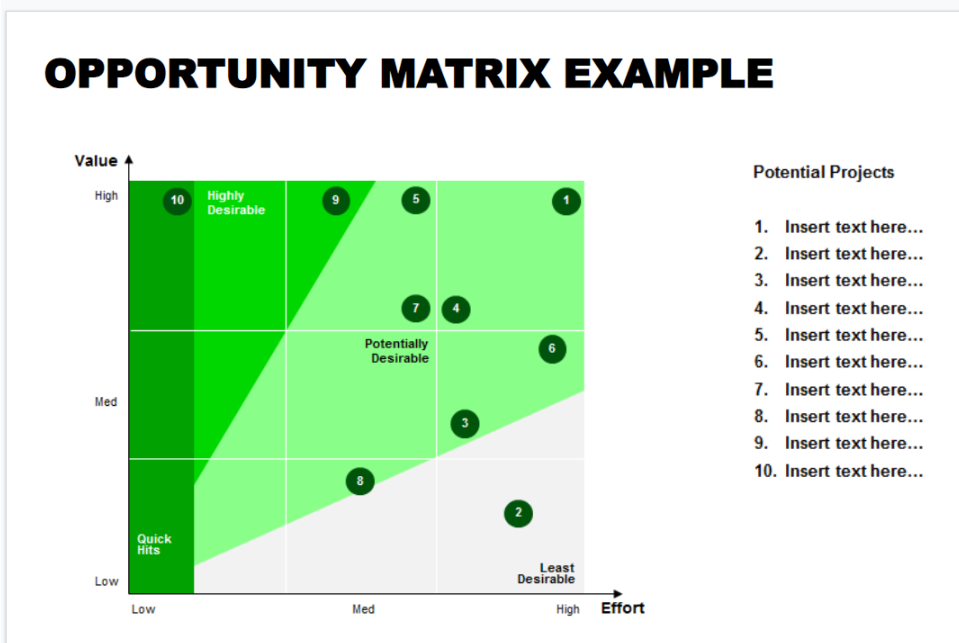Opportunity Matrix -- this document and supporting material will highlight where DLT (Distributed Ledger Technology) can be used for social impact and illustrate the specific areas of focus, across sectors, for the SI-SIG, weighing its feasibility and potential impact. It will include, but is not limited to:
Philanthropy and remittances (donation trace-ability, aid transparency, digital currencies in aid and development, governance and accountability)
Financial empowerment (financial inclusion, micro finance, micro insurance)
Identity and land rights (refugee assistance, land ownership documentation)
Governance and democracy (fighting censorship and fake news, voting rights and protections, election integrity)
Supply chain and environmental protections (sustainable supply chain, fair trade, ethical sourcing, fair labor practices)
An opportunity matrix is a tool for collecting and prioritizing ideas.
The goal is to generate ideas on a grid that aligns potential opportunities, measured against their feasibility and impact.
Collectively, we can group, discuss and prioritize areas of potential impact, anticipated long-term value and amount of effort to implement.
TAKE STOCK:
What are some of the areas that represent this sector?
What organizations are currently trying to provide support and/or solve this problem? (Technical and non-technical)
Who are the potential stakeholders? (Who must we work with, bring on board, align with, convince...to be successful)
ASSESS:
Define the journey
Where is this sector in its journey? What steps are needed to get to the next level? What does success look like when this initiative is no longer needed?
Define the headwinds
What challenges need to be overcome? Where might they rank from easy (we need to track a school district’s meals) to more challenging (governments around the world must agree)
Define the impact
If we get this right, what happens? (This can be a phase in the journey above)
THE ECOSYSTEM (so far)
Philanthropy and remittances (donation trace ability, aid transparency, digital currencies in aid and development, governance and accountability)
Financial empowerment (financial inclusion, micro-finance, micro-insurance)
Identity and land rights (refugee assistance, land ownership documentation)
Governance and democracy (fighting censorship and fake news, voting rights and protections, election integrity)
Supply chain and environmental protections (sustainable supply chain, fair trade, ethical sourcing, fair labor practices)
